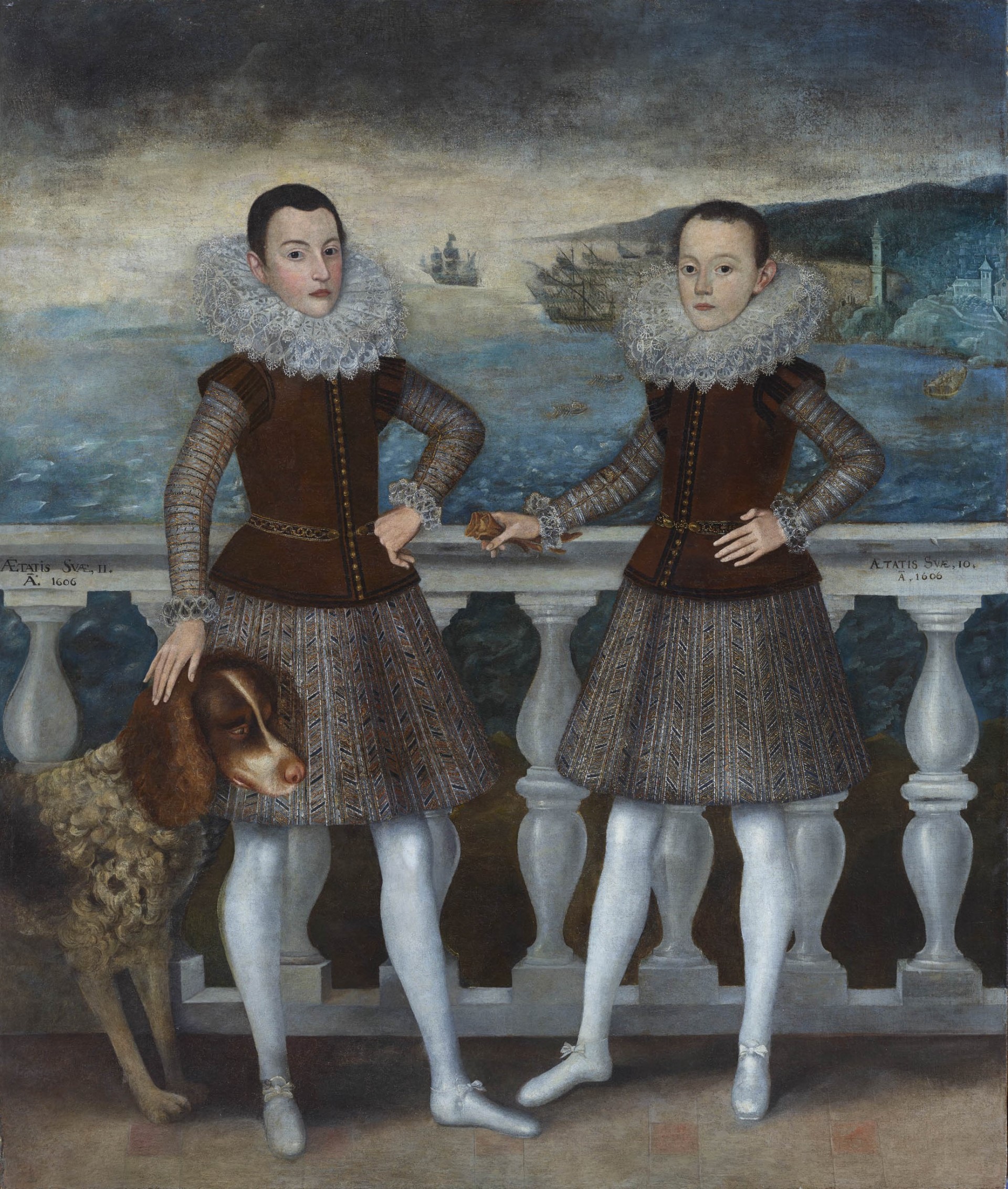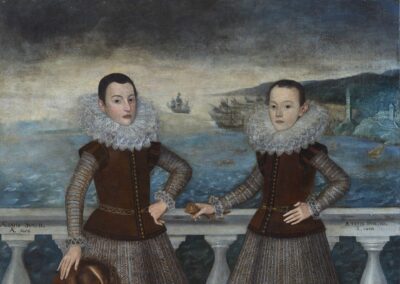On the frame of this canvas there is a label with the title ".Portrait of the infantes de la CerdaThis identification corresponds to the inventory made in 1877 for the estate of the 15th Duke of Medinaceli, in which this painting appears, under number 245, described as "...".The infantes D. Alonso and D. Fernando de la Cerda, sons of D. Fernando, first-born son of Alfonso the Tenth, the Wise, and his wife, Doña Blanca, daughter of S. Luis. They are leaning on a balustrade overlooking the sea: there is a dog between the two figures.". In an earlier inventory, carried out in 1756, the memory of the sitters had already been lost, as under entry number 170, it appears described as "...".Another painting of two manzebos of the house of La Zerda with a view of the sea and the port of Santa Maria in a black and gold frame."This identification with children of the de la Cerda lineage is surprising, since in the year of this inventory the person who must have passed on this work to the Medinaceli collection, Jerónima Spinola de la Cerda, widow of the 10th Duke from 1739, but who died in 1757, was still alive.
The painting is dated 1606 in an inscription painted at both ends of the balustrade handrail: on the left, "ÆTATIS SUAE 11/ Ä€. 1606", and on the right, "ÆTATIS SUAE 10/ Ä€. 160?". The background of the painting, by paintings and old engravings, corresponds to the port of Genoa, whose most prominent element, the "Lanterna", which appears on the right, was built in 1543. The date and the port allow us to identify the sitters with certainty as Philip and Agostino Spinola, sons of Ambrose Spinola, the future 1st Duke of Sesto and 1st Marquis of the Balbases. The portrait may have been painted as a souvenir before their departure from Genoa, as a few years later, in 1607, they left the Ligurian city at their father's request to be introduced to the court as servants of Queen Margaret of Austria. The first, Philip, born on 17 July 1594, so that in 1606 he could have been 11 years old, followed his father's military career, was a member of the Council of State and presided over the Council of Flanders, while the second, Agostino, born in 1597, took up the ecclesiastical career, becoming a cardinal and occupying the archiepiscopal chair of Seville, where he died in the plague of 1649.
It has been attributed to Juan Pantoja de la Cruz, an attribution that is difficult to accept, both for reasons of quality and style and because in 1606 it is known with certainty that the court painter was in Madrid painting the portraits of King Philip III and Queen Margaret of Austria for the 1st Duke of Lerma, These portraits also ended up in the Medinaceli collection and, in the aforementioned will of the 15th Duke, went, like the present canvas, to his son Carlos Fernández de Córdoba Pérez de Barradas, 2nd Duke of Tarifa. Perhaps this coincidence is partly the basis for the attribution to Pantoja, presuming that they would have had the same patron and material history, but now that they have been correctly identified, it will be necessary to investigate among the Genoese painters of the period to find a more plausible attribution. The two portraits of the kings mentioned above were bequeathed to the Prado Museum in 1934 by his widow, María de los Ángeles Medina-Garvey, where they remain, while many others were passed on to her nephews and nieces. This one, in particular, belonged to the Count of Mejorada, whose heirs sold it and it has finally ended up at Ansorena Auctions where the Foundation has recovered it.



